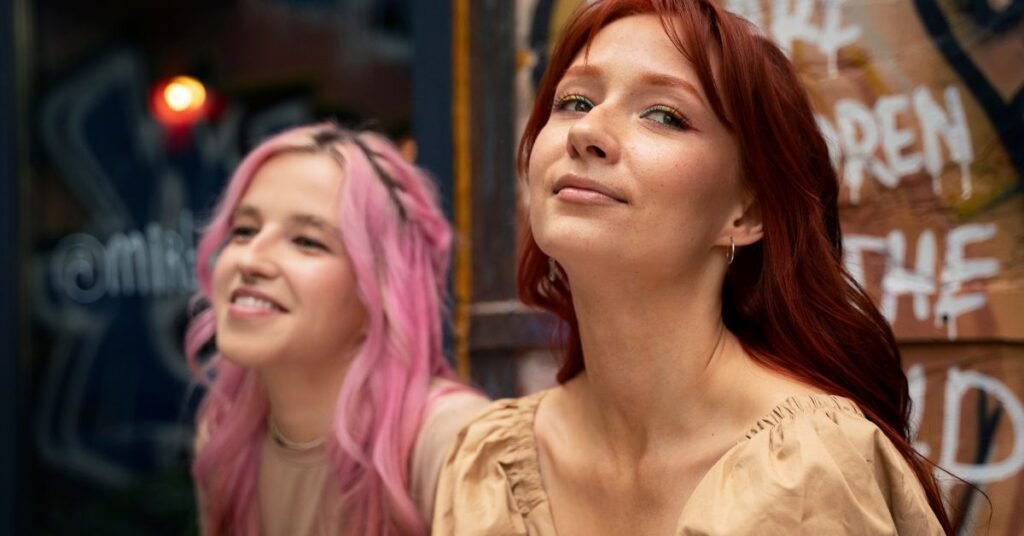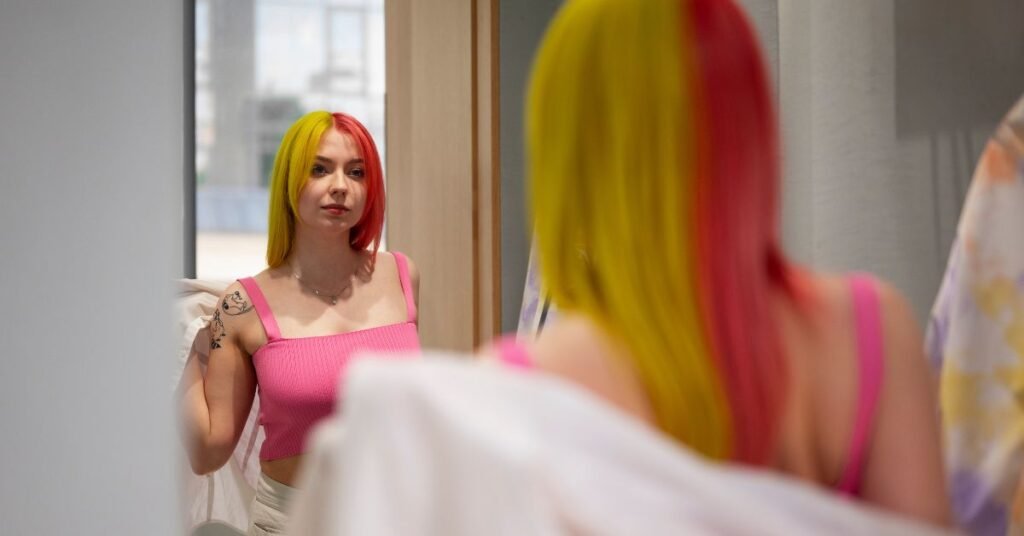Introduction
It’s a way to show your personality, confidence, and identity through your look. These haircuts often break gender rules and celebrate individuality.
Whether you want something bold, soft, edgy, or playful, there’s a style out there for you. The right haircut can boost your confidence and help you feel more like yourself. It’s not about fitting in. It’s about standing out and owning your identity.
In this guide, we’ll explore haircut ideas for different vibes and hair types. From pixie cuts to undercuts, fades to curls, there’s something for everyone. You’ll find tips, inspiration, and ways to match your haircut to your personal style.
Lesbian Undercuts

Lesbian undercuts are bold and stylish. They feature shaved or closely trimmed sides with longer hair on top. This contrast makes the look stand out. It’s modern, sharp, and full of personality.
Many gay women choose undercuts to show confidence and edge. You can style the top in many ways—messy, slicked back, or even curly. It’s a strong look that’s easy to maintain and makes a statement without saying a word.
Undercuts with Long Hair
Undercuts with long hair mix soft and bold in one look. The sides or back are shaved, while the top stays long. As a result, a cool contrast is created that catches the eye.. It’s edgy but still feminine.
Many gay women love this style because it feels both strong and free. You can wear the long hair down to hide the undercut or tie it up to show it off. It’s a great choice if you want something unique without losing your length.
Undercuts with Short Hair

Undercuts with short hair are clean, edgy, and full of personality. The sides and back are shaved or faded, while the top is left a bit longer. It’s a bold look that shows off your face and style.
Many gay women love this haircut because it’s easy to maintain and always looks sharp. You can go sleek, messy, or textured on top. It’s perfect if you want a strong, confident look with minimal effort.
Locs or Braids
Locs and braids are beautiful, expressive styles that celebrate natural hair. They come in many forms, long, short, thick, or thin. Both styles let you show your culture, creativity, and identity.
Many gay women choose locs or braids for their unique look and deep meaning. You can wear them neat or loose, add color, or mix in designs. These styles aren’t just about fashion—they tell a story and show pride in who you are.
Read More: Stylish Haircuts for Balding Men That Boost Confidence
The Bi Bob
The Bi Bob is a playful twist on the classic bob haircut. It’s clean, sharp, and slightly edgy—just like the energy it represents. Depending on your vibe, it can be straight, wavy, or textured.
This cut is loved by many bi and queer women because it’s stylish and easy to wear. It shows confidence but also keeps things soft and flexible. Whether you want to look bold or cute, the Bi Bob can do both.
Fades and Tapers
Fades and tapers are clean, low-maintenance cuts that gradually shorten the hair on the sides and back. They give a smooth, blended look that works well with many styles on top—short, curly, or even a mini pomp.
Many gay women love fades and tapers for their sharp, confident vibe. These cuts are great for showing off personality without needing a lot of styling. Whether you want something bold or more subtle, a fade or taper can fit your look perfectly.
“Dyke” as Reclaimed?
The word “dyke” used to be an insult toward lesbian and queer women. It was often said to hurt or shame people. But today, many in the LGBTQ+ community have taken the word back. They now use it with pride to show strength and identity.
Not everyone feels the same way about it, and that’s okay. Some find it empowering, while others still find it hurtful. Ultimately, it comes down to personal preference and comfort. What matters most is using it with care and respect—for yourself and others.
Reclaiming “Dyke” What It Means
| Aspect | Past Use (Negative) | Reclaimed Use (Positive) |
| Meaning | Insult toward lesbian or masculine women | Identity term used with pride |
| Tone | Hurtful, harsh | Strong, bold, self-loving |
| Who Used It | Outsiders, bullies | LGBTQ+ people reclaiming power |
| Emotion It Evoked | Shame, fear | Confidence, pride |
| Social Acceptance | Taboo or offensive | Mixed—accepted in queer spaces, not always public |
| Used In Media | Rare or as a slur | Appears in zines, art, activism, and pride merch |
| Common In | 20th-century hate speech | Queer activism and self-expression today |
| Still Controversial? | Yes | Yes—depends on context and community |
5 FAQs related to gay women’s haircuts and identity expression, each with a short, clear answer:
1. What is a good haircut for gay or queer women?
Styles like undercuts, fades, pixie cuts, and side shaves are popular for their bold, expressive look.
2. Do I have to look a certain way to identify as gay?
Not at all.When it comes to being gay, it’s not about how you look. It’s about who you are and who you love.
3. Why do some gay women choose short or edgy haircuts?
These styles can feel empowering and help show confidence, identity, or non-traditional beauty.
4. May I use the word “dyke”?
Some queer women use it proudly, but it’s best to respect each person’s comfort with the term.
Is it possible to have a “gay” haircut and still be feminine?
Absolutely. Gay women express themselves in many ways—feminine, masculine, or anything in between.
Conclusion
Gay women’s haircuts are more than just styles. You can express yourself through them. Whether you like bold cuts, soft looks, or something in between, your hair can reflect your true self.
Feeling good about yourself is the most important thing. Pick a haircut that matches your vibe and makes you feel confident. There’s no right or wrong—just what feels right for you.
